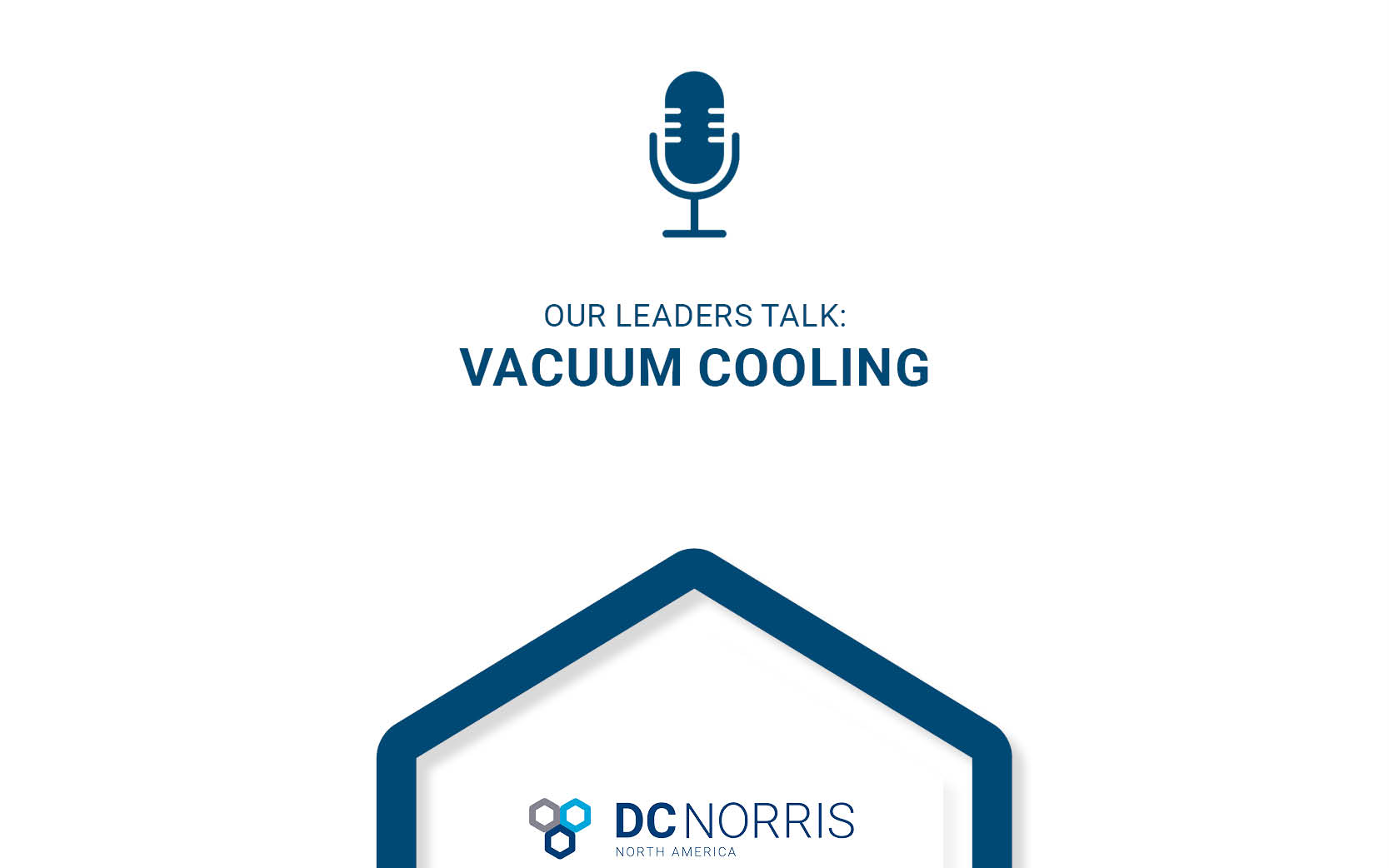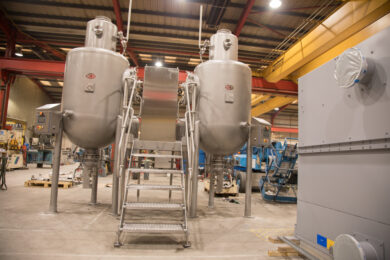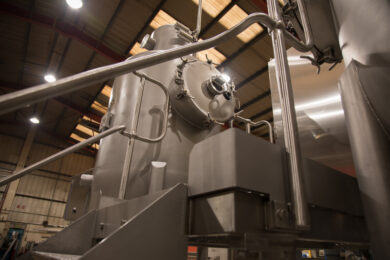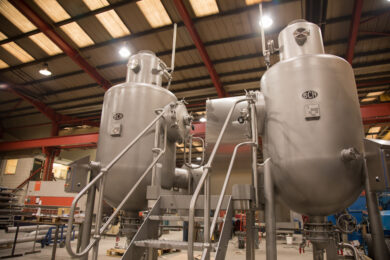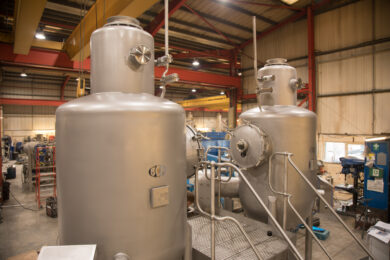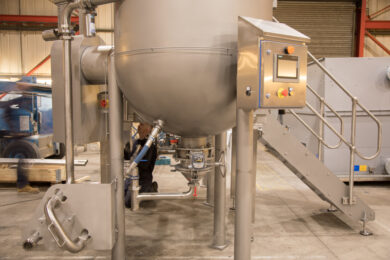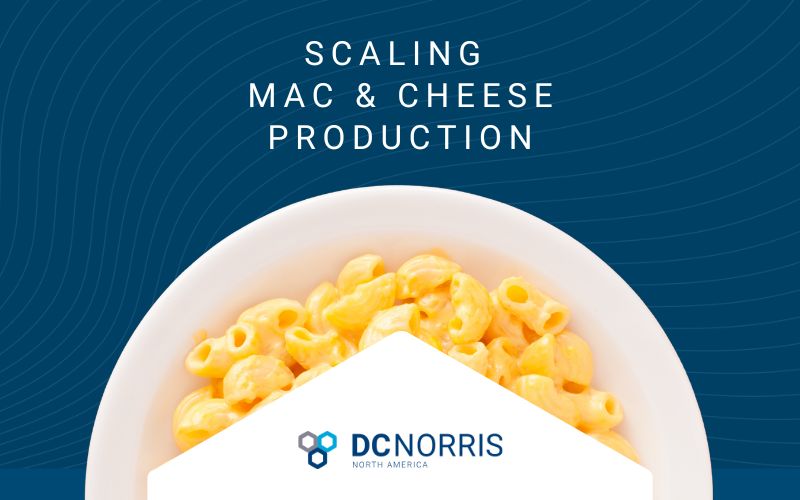After a spike in vacuum cooling equipment inquiries, DC Norris North America’s leaders sat down to explore the rising interest in vacuum cooling technology, a method known for its rapid and uniform cooling capabilities.
You can listen to the conversation between DC Norris North America, President Dick Smith, Vice President, Matt Klein, and Sales Engineer Brian Irwin here.
Here’s an overview of their discussion, shedding light on how vacuum cooling works and its numerous benefits.
Understanding Vacuum Cooling
Vacuum cooling is a physics-forward cooling technique that chills food products quickly by reducing the pressure inside a sealed chamber. This method is particularly effective for liquids with and without particulate content including ready-to-eat meals. Unlike conventional cooling methods, vacuum cooling uses the principle of reduced pressure to accelerate the evaporation process, thereby cooling the product more efficiently.
The Vacuum Cooling Process
The process of vacuum cooling involves several key steps:
- Product Placement: The food product is placed inside a vacuum-rated vessel designed to handle low pressures.
- Vacuum Creation: A liquid ring vacuum pump is employed to decrease the pressure within the vessel. As the pressure drops, so does the boiling point of water in the food, leading to rapid evaporation.
- Evaporation and Heat Absorption: Water evaporates from the product, absorbing heat and significantly lowering the product’s temperature. As explained by President, Dick Smith in the discussion, “By reducing the pressure, we can essentially cool and keep cooling until we get down to about 29 inches on the mercury scale, which is essentially an ultimate vacuum.”
- Vapor Condensation: The vapor is then removed from the vessel and condensed back into liquid form using a condenser, maintaining the vacuum and continuing the cooling process.
- Final Cooling: The cooling process continues until the desired temperature is achieved, after which the product is removed, ready for packaging or further processing.
Essential Components of a Vacuum Cooling System
DC Norris North America’s vacuum cooling systems consist of several critical components:
- Batch Cooling Vessel: Holds the food product during the cooling process.
- Liquid Ring Vacuum Pump: Creates the necessary vacuum.
- Steam Ejector: Assists in achieving lower pressures by using steam to remove air and vapor.
- Condenser: Cools and condenses the vapor back into liquid.
- Recovery Tank: Collects the condensed water for reuse.
Advantages of Vacuum Cooling
Vacuum cooling presents numerous advantages for food manufacturers:
- Speed: Significantly faster cooling times, reducing hours to minutes.
- Uniform Cooling: Ensures consistent cooling throughout the product, minimizing spoilage and maintaining quality.
- Energy Efficiency: Often uses less energy when compared to air or water cooling systems, resulting in cost savings and reduced environmental impact.
- Improved Product Quality: Helps preserve texture, flavor, and nutritional value by cooling products swiftly and uniformly.
- Versatility: Effective for a wide range of food products.
Overcoming Challenges
While vacuum cooling offers numerous benefits, it also requires careful management. For instance, rapidly applying a vacuum can cause the product to boil too quickly, potentially leading to losses. As Dick Smith noted during the discussion, “If we apply the vacuum too quickly, the products will boil and we could end up sending all the product down the vacuum pot. It does happen and can lead to further issues.”
Implementing Vacuum Cooling
Vacuum cooling is a transformative technology for food manufacturers, offering quick, efficient, and uniform cooling that preserves product quality. DC Norris North America’s expertise in vacuum cooling systems ensures that food producers can leverage this technology to meet the demands of modern consumers while improving operational efficiency.
We’re ready to talk about your cooling needs and to match them to the equipment that will maximize quality, yields, and energy savings. You can start the conversation by booking a time to meet with our experts at your earliest convenience. Book Here
